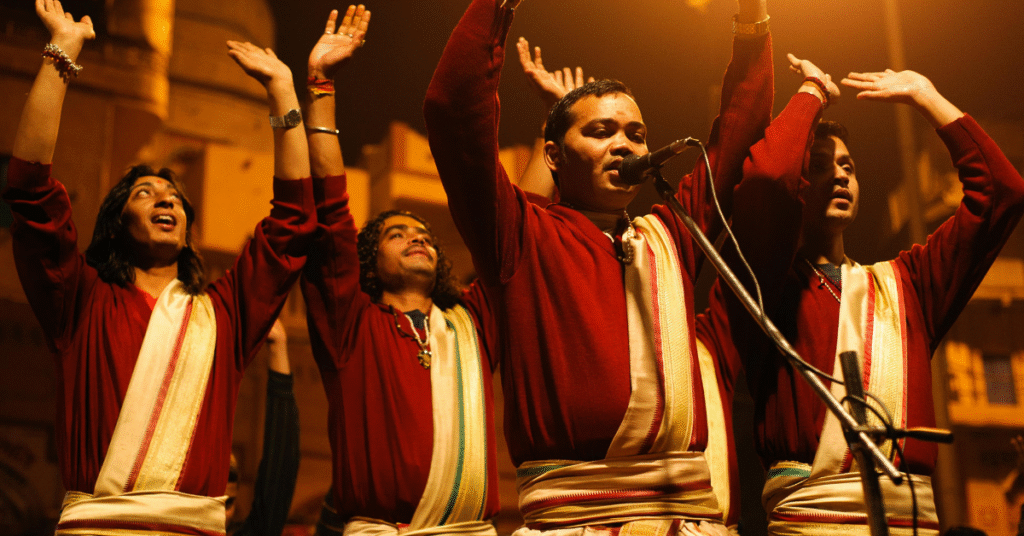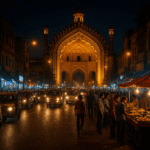Introduction to Varanasi Panchkoshi Parikrama Marg
Varanasi, also known as Kashi, is one of the oldest and holiest cities in India, revered by Hindus as a sacred pilgrimage site. The city is steeped in history, spirituality, and tradition, attracting millions of devotees and tourists from around the world. One of the most significant rituals performed in Varanasi is the Panchkoshi Parikrama Marg, a traditional circumambulation of the city covering a distance of approximately 15 miles.
Significance of Varanasi

Historical Background of the Panchkoshi Parikrama
The Panchkoshi Parikrama Marg has a deep-rooted historical significance in Hindu tradition. It is believed that Lord Shiva himself established the sacred route for devotees to perform the parikrama around the city of Varanasi. The practice dates back thousands of years and is mentioned in ancient scriptures and texts. Pilgrims undertake the parikrama to seek blessings, cleanse their sins, and attain spiritual enlightenment.
Importance of Varanasi in Hindu Tradition
Varanasi holds a special place in Hindu mythology and tradition. It is considered the abode of Lord Shiva and Goddess Parvati, making it a highly revered pilgrimage site for devotees. The city is believed to be a gateway to liberation (moksha) and is considered a place where one can attain spiritual awakening and salvation. Varanasi is also known for its ghats, where rituals, ceremonies, and cremations take place, symbolizing the cycle of life and death.
Significance of Performing the Panchkoshi Parikrama
The Panchkoshi Parikrama is considered a sacred and auspicious ritual in Hindu tradition. It is believed that by completing the parikrama, devotees can purify their mind, body, and soul, and seek blessings from the divine. The journey around Varanasi is said to bring peace, prosperity, and fulfillment to those who undertake it with devotion and sincerity. The parikrama is also seen as a way to connect with the spiritual energy of the city and experience a sense of oneness with the universe.
Rituals and Practices Involved in the Parikrama
The Panchkoshi Parikrama involves various rituals and practices that pilgrims must follow during their journey. Devotees start the parikrama from a designated point and walk in a clockwise direction, visiting temples, shrines, and sacred sites along the way. They offer prayers, perform rituals, and make offerings to the deities as a form of devotion and gratitude. Pilgrims also observe fasting, meditation, and chanting of mantras during the parikrama to enhance their spiritual experience.
Spiritual Benefits of Completing the Parikrama
Completing the Panchkoshi Parikrama is believed to bestow numerous spiritual benefits on devotees. It is said to cleanse one’s sins, purify the soul, and bring blessings and divine grace into one’s life. The parikrama is also believed to fulfill wishes, remove obstacles, and bring peace and harmony to the mind and body. By undertaking the parikrama with faith and devotion, pilgrims can experience a deep sense of spiritual fulfillment and inner transformation.
Varanasi Panchkoshi Parikrama Marg Route
The Panchkoshi Parikrama Marg covers a distance of approximately 15 miles, encircling the city of Varanasi and passing through various important landmarks and sacred sites. The route is divided into five sectors, each representing a different aspect of spiritual significance. Pilgrims walk along the designated path, stopping at temples, ghats, and shrines to offer prayers and seek blessings from the deities. The parikrama typically takes one to two days to complete, depending on the pace of the pilgrim.
Stories and Legends Associated with the Parikrama
There are several stories and legends associated with the Panchkoshi Parikrama Marg, highlighting the spiritual significance and divine blessings that pilgrims can receive by undertaking the journey. One popular legend tells the story of a devout devotee who completed the parikrama with unwavering faith and devotion, only to be blessed by Lord Shiva himself with divine grace and enlightenment. Such stories inspire pilgrims to undertake the parikrama with dedication and sincerity, believing in the power of divine blessings and spiritual transformation.
Festivals and Events Celebrated along the Parikrama Marg
The Panchkoshi Parikrama Marg is not just a pilgrimage route but also a place where various festivals and events are celebrated throughout the year. Devotees gather in large numbers to participate in religious ceremonies, cultural performances, and spiritual discourses along the parikrama route. Festivals such as Mahashivratri, Dev Deepavali, and Kartik Purnima are celebrated with great fervor and enthusiasm, adding to the spiritual vibrancy and cultural richness of Varanasi.
Modern-Day Relevance of the Panchkoshi Parikrama
In today’s fast-paced world, the tradition of the Panchkoshi Parikrama Marg holds immense relevance for individuals seeking spiritual solace and inner peace. The parikrama offers a unique opportunity for devotees to disconnect from the chaos of daily life, connect with their inner selves, and experience a sense of spiritual rejuvenation. Many pilgrims undertake the parikrama as a form of spiritual retreat, seeking guidance, healing, and enlightenment in the sacred environs of Varanasi.
Challenges and Obstacles Faced by Pilgrims
While the Panchkoshi Parikrama Marg is a revered tradition in Hindu culture, it also presents challenges and obstacles for pilgrims undertaking the journey. The long distance, harsh weather conditions, and physical exertion involved in walking around Varanasi can be daunting for some devotees. Additionally, navigating through crowded streets, negotiating with vendors, and ensuring personal safety can pose challenges for pilgrims, especially those unfamiliar with the city.
Conclusion: Upholding the Tradition of Varanasi Panchkoshi Parikrama Marg
The Varanasi Panchkoshi Parikrama Marg is not just a physical journey but a spiritual quest that holds profound significance in Hindu tradition. By undertaking the parikrama with faith, devotion, and sincerity, pilgrims can experience a deep sense of spiritual fulfillment, inner transformation, and divine blessings. The tradition of the parikrama continues to uphold the cultural heritage and spiritual legacy of Varanasi, inspiring generations of devotees to seek spiritual enlightenment and connect with the divine essence of the city. As pilgrims walk along the sacred path of the parikrama, they carry with them the blessings of Lord Shiva and the divine grace of Varanasi, enriching their lives with spiritual wisdom, peace, and harmony.




